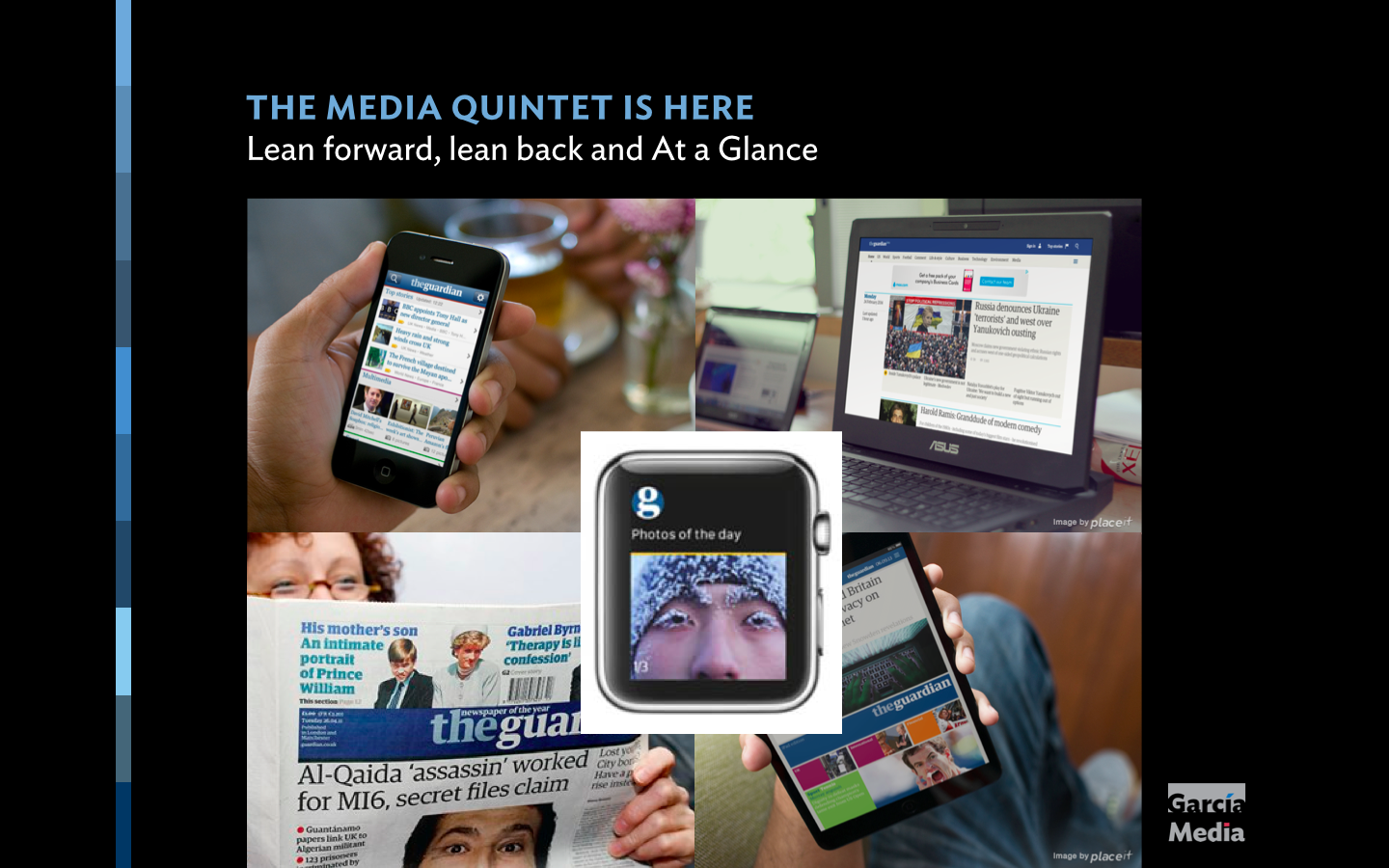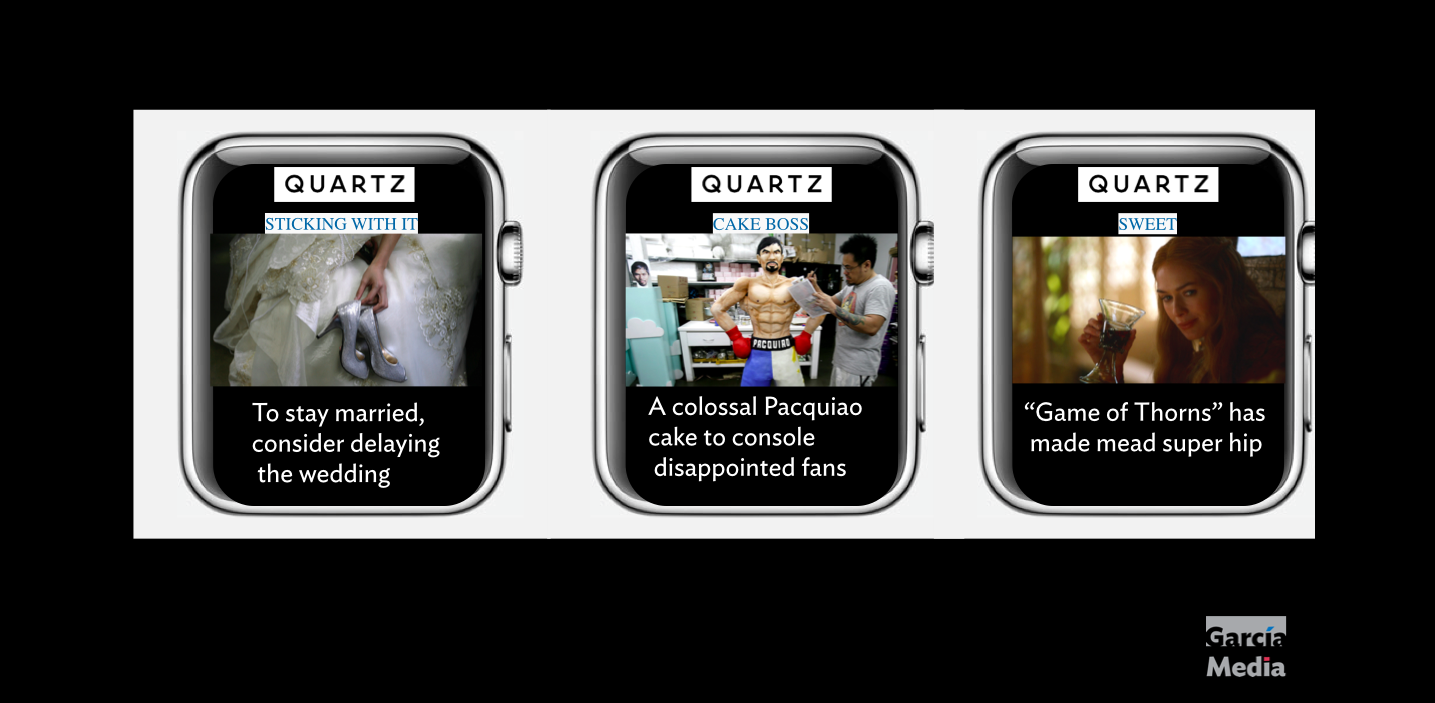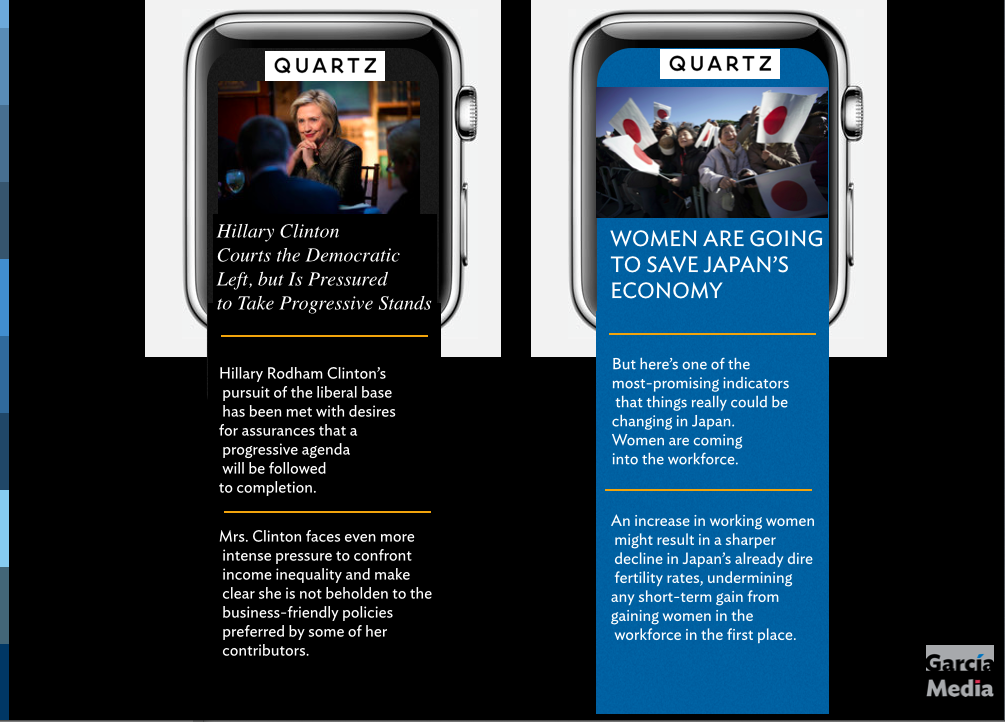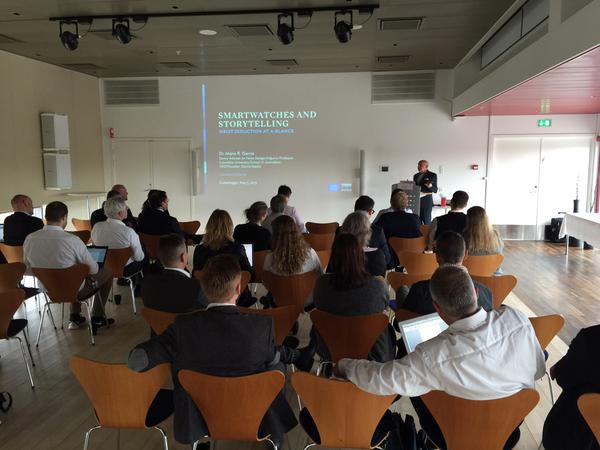
The Media Quintet is here. Gulf News artist Luis Vazquez recreates his popular Media Quartet illustrations to add the new instrument

The Guardian will be one of the first media companies to have an app for the Apple Watch. Here is how their media quintet would look.


A headline and two bulleted items, that’s all one needs here! (These are not actual Quartz sketches, although I have used some of their content for these examples)
As one-day gatherings go, this was at Berlingske, the Danish daily in Copenhagen, was a productive, high level meeting of the minds, with the focus on smartwatches and how we in newsrooms will best prepare for the day when those new platforms are out in force and our audiences crave information for the era of at a glance journalism.
The Smartwach Symposium has been in the makings for months, the research conducted by two Aarhhus University graduate students, Jonas Skytte and Ganesh Ram, both about to receive their Masters' degrees in product development, working closely with Kim Svendsen of Stibo Accelerator and Berlingske's CEO/Editor Lisbeth Knudsen and Director of Lab, Anders Kring, with in put and collaboration of the Garcia Media team, including art director Reed Reibstein.
This is work in progress, of course, and our symposium is the beginning of a series of gatherings to continue presenting findings of the research and providing material for newsroom discussions. Nobody claims to have many answers, and, in fact, we all have many questions. One of the important questions at this symposium:
If the promise of the smartphone has been “you will never get bored,” then what is the promise of the watch?
And some conclusions for us to share with the industry:
1. No doubt about it, if you are a publisher/editor, you must start thinking smartwatch now.
2. Start preparing for “small screen, at a glance journalism”. Social media could show the way. Take a look at the best of Twitter, as in The New York Times' The Upshot, and Quartz for examples of vibrant, simple storytelling that communicates at a glance.
3. Just like the iPhone turned the telephone into something more than a platform in which to talk, the watch is not just a watch to tell time, but many other things: indispensable life companion, “a very small screen. And the whole world will be fighting for this space.”
4. The watch is likely to become a close friend with fast personal answers about a lot of life's daily questions and challenges.
What the early research tells us about smartwatches and news
The initial phase of the Aarhus University students' research reveals the following centerpieces for our consideration:
. The importance of headlines
—The idea is that words (headlines) have never been more important in any of the existing platforms. While headlines always served a purpose of seduction, right now they must wear the little black dress, Chanel #5 and Manolo Blanik stilettos, and be able to walk the walk without skipping a beat.
2. Bullets are important, instead of body text
—For the watch news consumer, short bulleted items are more important than narrative text.
–The readers don’t have time or the tolerance to be lured and not get the story immediately!
–Use this space to explains the **main facts and details (20 lines max**). Some users would like the possibility to read more on the watch directly – but keep it short as users don’t have much time or are not able to read for too long on the watch at a time.
3. Readers use the images to get into the context of the title fast.
—Choosing the correct image for each story is therefore highly important.
—Simple images do better than busy ones: head shots!
–The image needs to be resized and sometimes cropped to fit on the watch. This puts some manual work onto the digital editors.
**Relevancy and speed**
4. Don’t bother me with too many pings and alerts?
.—The relevancy and speed of the story determines if the reader accepts the notification or is annoyed by it.
—Anything slow/dupes and irrelevant news will annoy the reader
5. In at a glance journalism interaction is minimal and short timed
.—Don’t expect the reader to interact more than 4 seconds with each notification.
— Rarely will the reader actually take action on the smart watch directly. This is why the title should explain the entire story.
–With the smartwatch the finger does little and the eyes and the brain carry the bulk of the work.
—Long interactions are straining and the smart watch is not built for this in terms for screen real estate and battery power.
6. Low degrees of tolerance for the non essential and for interruptions that may not be considered “deserving”.
.—No place here for the superfluous.
What next for our Smartwatch and News project?



Some scenes from our Smartwatch and News Symposium in Copenhagen, Denmark, at Berlingske’s.
We will conduct a workshop May 31 as part of the WAN IFRA World Congress in Washington, DC. For more information, please use this contact:
Stephen Fozard
stephen.fozard@wan-ifra.org
Kim Svendsen
ksve@ccieurope.com
More about the conference: